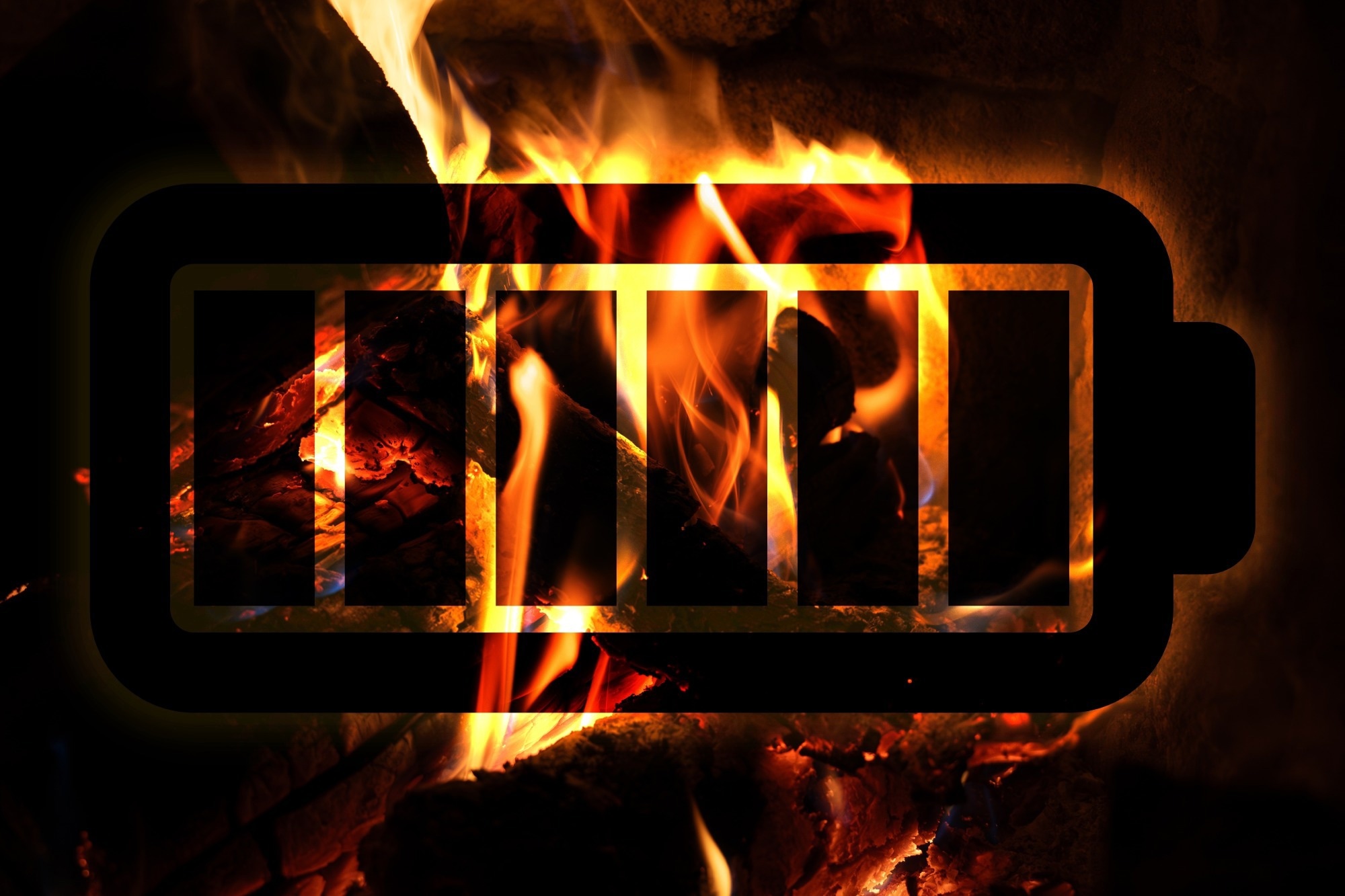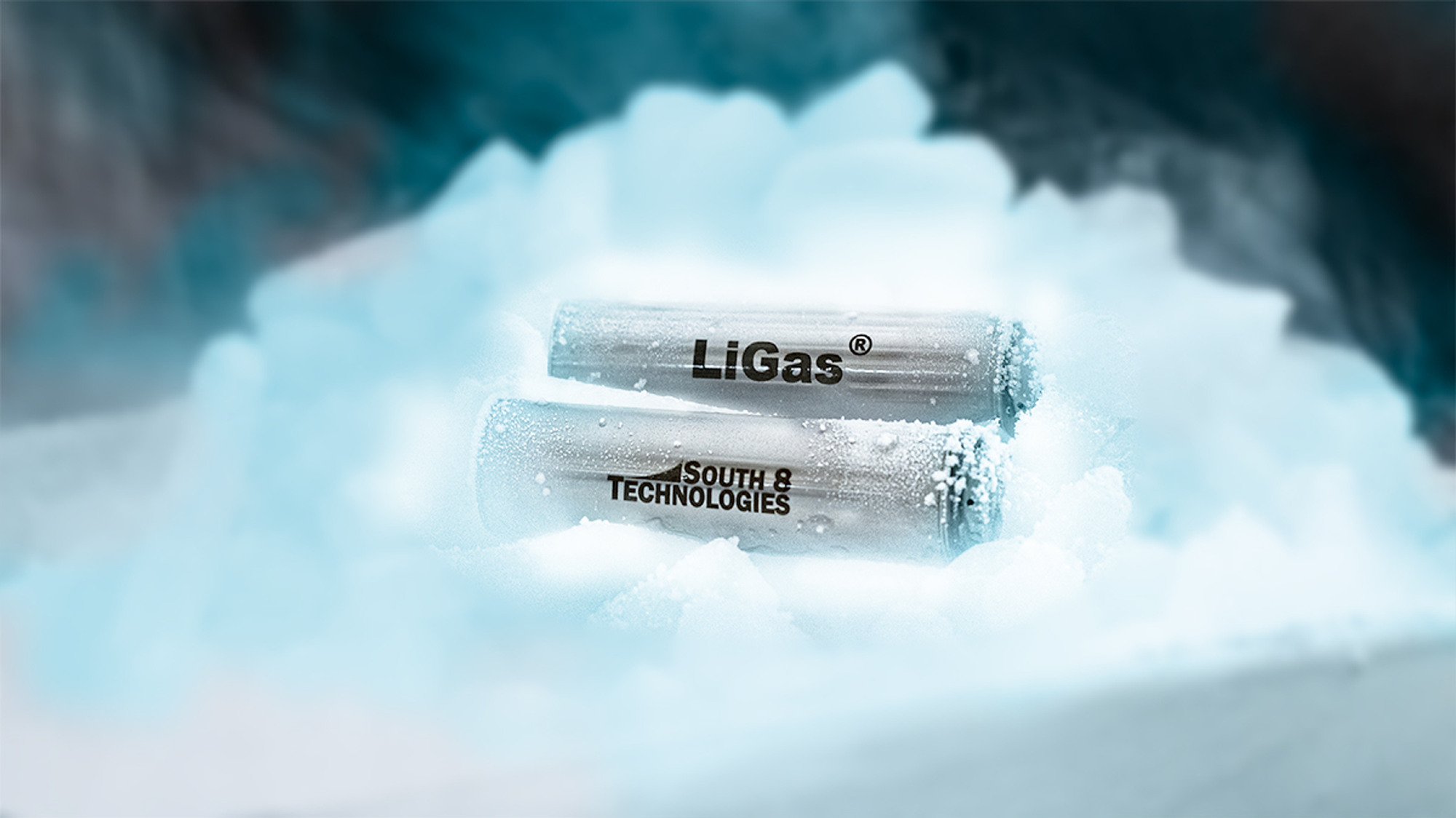 Interview conducted by Lexie CornerNov 5 2024
Interview conducted by Lexie CornerNov 5 2024In this interview, Tom Stepien, CEO of South 8 Technologies, discusses how the company’s innovative LiGas® technology is advancing safer lithium-ion battery solutions and addressing challenges across defense, EV, and industrial applications.
Can you introduce yourself and your role at South 8 Technologies?
South 8 is a development-stage lithium-ion battery and electrolyte manufacturer based in beautiful San Diego, California, in the U.S. We're eight years old, and I am one of the 47 employees at the company.
I've been here for about a year as the CEO, and we are in the process of scaling the company. I’m an engineer by training, more of a generalist mechanical engineer. I spent a lot of time in Silicon Valley at semiconductor equipment companies—companies that make the machines that make the chips. About 15 years ago, I got into batteries and started another battery company. Now, I've been here at South 8 for about a year.
South 8 has introduced LiGas® as a revolutionary liquefied gas electrolyte. What inspired the development of LiGas®, and what specific challenges in lithium-ion battery technology were you aiming to address?
Yes, let me talk about the challenges first, because that gives you the context for the inspiration.
There are a number of good things about lithium-ion batteries, right? We’re all familiar with the cost reduction since it was first introduced in the Sony Handycam in 1991, I think it was. The growth has been terrific—it’s in every device: my iPhone, your devices, your laptop, etc.
However, like everything, there are pluses and minuses. Two of the major pain points are fire challenges with lithium-ion and the limited range of electric vehicles (EVs) in cold weather. A third challenge is cost, with many EV manufacturers essentially shipping dollar bills—or pounds, Australian dollars, whatever—with these vehicles. So that’s exactly the inspiration for LiGas®.
LiGas® is a liquefied gas electrolyte, instead of a liquid. So, what does that give you? It provides protection against fire, and I’m happy to talk about how that happens.
It has a much lower freezing point than standard liquid electrolyte, which protects against cold weather. The process of putting the liquefied gas into these cylinders is also less expensive than conventional methods.
The founders, Cyrus and Jungwoo, are from California, San Diego, the local university here, and they thought about these problems. "Gosh, is there something that can solve the cold and also deal with some of these fire issues?" Over time, they developed the idea—turning knobs, living off grants, and growing the company. A Ph.D. thesis sparked the inspiration eight years ago, and that’s where we are right now.

Image Credit: Mino Surkala/Shutterstock.com
LiGas® delivers unique thermal management benefits. Can you explain how it handles extreme temperatures and why it is more effective at preventing fire hazards in lithium-ion batteries?
Let’s talk about temperature first. It’s about the characteristics of the gas. Every gas, every element, has specific characteristics—our periodic table coming back to haunt us! LiGas® is super interesting because it’s highly conductive. We know copper is a good conductor, and rubber is not, but liquids can also be conductors. LiGas® is very stable at higher voltages, around 4.5 volts, where liquid electrolytes would typically break down.
What really helps is viscosity. If you get a liquid cold, it becomes viscous like honey at around -20° C. Liquefied gas, on the other hand, doesn't get viscous until -100° C, so it flows much more easily. Inside the battery, this liquid flows from the anode to the cathode as it shuttles lithium ions back and forth. We're essentially playing tennis with electrons.
Those characteristics, especially the viscosity, enable much better operation compared to liquid. We retain 85 % of the energy capacity at -30 °C, while other batteries are essentially bricks. That’s of keen interest to a variety of customers.
That’s the cold part. The safety part comes from the fact that this cylinder, this cell, is under pressure. The physics of pressure gives us inherent safety. A balloon is under pressure, and if you pop it, it explodes. It’s similar here. The cylinder is under pressure, and if there’s a fault, then the fuel, the electrolyte, evaporates instantly.
Here’s a quick example: We had a customer take batteries to a shooting range, and they stacked two standard batteries on top of each other, shot one with a bullet, and it burned for six minutes. About five minutes into that burn, it caught the adjacent battery on fire. That’s thermal propagation. When you have 7,000 of these in the bowels of a car, you can imagine what that's like, and there have been fires that lasted fifteen days.
They then took our batteries, same internals, shot a bullet through the top one, and it burned for six seconds, not six minutes. There’s no time to ignite the adjacent battery.
This is due to the physics of pressure. As soon as there’s a void, a problem, or a puncture in the pressure vessel, the pressure escapes. That’s how we get the inherent safety of the cells we make.
How does LiGas® impact the cost of battery production, and what is South 8’s approach to scaling this technology across different sectors?
You already know the key metric here is dollars per kilowatt-hour—dollars in the numerator, kilowatt-hours in the denominator. We reduce the numerator in a couple of ways.
When filling a battery, a typical liquid fill is like pouring champagne into a glass. It bubbles up, and then you have a second pour. In battery terms, that's because the electrolyte is getting into and wetting the anode-cathode jelly roll, as it's called. Almost everyone does two fills; some manufacturers do four.
With LiGas®, it’s filled under pressure because it has to be filled under pressure, and it’s a single-shot fill, so it’s one and done. This allows you, in manufacturing, to have at least half, maybe even just one quarter, of the fill systems. That reduces capital in these factories, lowers operational costs, saves space, reduces electricity, and helps you on the numerator.
Another numerator example, dollar per kilowatt-hour again, is in the formation process. Every single battery that goes out the door of these factories goes through a testing process, a formation process, where you are forming a really important layer called the solid electrolyte interphase—the coating on the anode and cathode. Getting the initial testing correct is important for the life of the battery. It’s the very first charges these batteries see, charging them gently in a very prescribed manner.
Much of that process also involves getting the electrolyte into the jelly roll, fully wetted and fully penetrated. We do that in minutes, not hours. Formation accounts for about 40 % of the capital cost in these factories. If you can reduce the formation time by an order of magnitude, you can imagine how much that lowers the numerator in the dollar per kilowatt-hour. So that’s the numerator.
On the denominator, that’s where the science guys come in. The denominator is kilowatt-hours, which is power times time. Kilowatts is power; hours obviously is time. When you're able to penetrate better, you can make your electrode denser because we can get into the nooks and crannies of the jelly roll better with LiGas® compared to conventional methods, allowing for greater density. That helps increase the denominator.
We can also crank up the voltage—I mentioned we’re more stable, around 4.5 volts. There are less expensive, high-performing chemistries that need a voltage above 4.5 volts, and South 8 and LiGas® can uniquely enable that.
So that’s how we reduce the numerator—cutting factory costs—and increase the denominator through the science and characteristics of LiGas®, driving the dollar per kilowatt-hour metric in the right direction. And that's how we affect the cost.
Your Arctic LiGas® 18650 cell is a major advancement. How does it build on LiGas® technology, and what makes it stand out in terms of performance?
Yes, it’s that—the cold weather capability and the ability to significantly reduce fire risk. Let me give you an example; maybe that's the best way to answer this question.
We have a customer with cube satellites—shoebox-sized satellites—and thousands of them go up every year (it’s getting pretty crowded in space). They told us, “We haven’t found a commercial battery that can charge at -20 °C.” It’s one thing to provide energy to discharge at -20, -30, or -40 °C (and we deliver a very high percentage of energy when we discharge), but the real challenge is also being able to charge, as these systems have to charge.
So, how do satellites do it today? Well, they have heaters to warm up the battery. It’s almost like when you go skiing, and your phone starts acting sluggish, so you put it in your coat pocket to warm it up. We can charge at -20 °C, changing the need for heating and everything. That’s super interesting to them—so cold, for sure.
Then there’s stationary storage. We hear about these horrible fires. I recently learned that, in 2023, there were 21,000 lithium-ion fires in China caused by scooters and e-bikes, a 17 % increase from 2022.1 I’ve also seen data showing that in New York, there were 250 lithium-ion battery fires last year, resulting in 18 deaths.2 For stationary storage, that’s about insurance. If you can have a safer battery that’s not going to burn for two weeks, we believe it’s highly valued by our customers.

Arctic™ LiGas cells use South 8’s innovative liquefied gas electrolyte, replacing traditional toxic and flammable liquids for a safer, versatile, high-performance lithium-ion solution. Image Credit: South 8
You mentioned satellites as a great example. Are there any other industries currently showing strong interest in LiGas® technology, and why is this technology particularly beneficial for them?
Yes! The U.S. Army has shown very strong interest, mainly for safety reasons. They have all these electronics—night vision goggles, radios, and so on—so soldiers apparently carry extra batteries on their vests. The vest might protect them from a bullet, but if the bullet hits the battery and it burns for six minutes, you can imagine that wouldn’t be good.
They like the fact that our battery evaporates upon a puncture, so we are viewed, in their mind, as safer. So, they've given us a lot of business to make cells that go into packs soldiers can take to the front lines. This is true with the U.S. and NATO countries, as these packs are provided. It’s still early, we’re still in testing, but it’s a really good sign.
I mentioned the CubeSat guys. There are also drone companies and radio providers—radios don’t work as well in cold weather for emergency services, whether it's soldiers, firemen, or policemen. With a better battery, you can offer better protection for them, and we’re seeing really strong interest there.
Many automotive OEMs are also testing. Everybody is interested: "Oh, my goodness, this is super interesting. I can sell EVs in Canada now!" It's easy to sell EVs in Los Angeles, but much harder in Minnesota and Canada, with the cold. "Oh, and it might be a little bit safer?” That's important, because they have the same fire concerns. “And I can save cost? All right, now you have my attention."
The EV companies are all sampling, and they’re appropriately conservative—it takes time. So, we're doing a lot of sampling, and that'll translate into business in three years, give or take. The middle markets are interesting—that’s where stationary storage, industrial power tools, and radio providers come in.
So, in terms of markets, it’s defense first, industrial and stationary in the middle, and then EVs trying to advance them all. But they all are moving at different rates.
What are the next steps for South 8 in scaling LiGas® technology and expanding its adoption in the battery industry?
So, it's more of what we're doing right now. Step one is creating awareness of what we have. We were at Battery Week last week in Detroit, and we're doing interviews like this to let people know there are alternatives—safer alternatives—to consider.
Step two is sampling. We got our first purchase order from a new automotive OEM in Japan just last week and shipped them some sample cells, about half a dozen. We’re also at a defense conference in Washington, D.C. right now. One of our colleagues is there to, again, create awareness. We're getting some samples out and receiving initial purchase orders.
It starts with a crawl, walk, run: "Let's sample... Oh, this works. Let's not just get a half dozen, buy a couple hundred. Let's get a couple thousand." That's the scaling path that we're on as we grow and begin to penetrate some of these markets, solving some of the problems that our customers want us to help solve.
About Tom Stepien
Tom Stepien is the CEO of South 8, the developer of LiGas®, a liquefied gas electrolyte for advanced lithium-ion batteries. With more than 35 years of business, technology, and energy industry leadership, Tom has a deep understanding of battery and energy systems. Tom previously co-founded and led Primus Power, a long duration stationary battery company, and served as CEO with QM Power, a firm focused on electric vehicle motors and energy efficient controllers. He is also a Director at Euro Manganese, a lithium-ion battery materials company focused on the electric vehicle industry.
Prior to entering the battery space, Tom spent thirteen years at Applied Materials, the global leader in providing innovative equipment, services and software to enable the manufacture of advanced semiconductor, flat panel display and solar photovoltaic products. He received BS and MS degrees in Mechanical Engineering from the Massachusetts Institute of Technology. He is a co-inventor of eleven U.S. and international battery patents. Tom previously served on the Board of Special Olympics Northern California for ten years.
For More Information
References and Further Reading
- Jomaas, G., Adikey, R., Martinez, L. (2024). E-bikes caused 21000 fires in China last year! [Online] Burning Matters. Available at: https://burningmatters.beehiiv.com/p/ebikes-caused-21000-fires-china-last-year
- NYC. (2024). Mayor Adams Announces Finalized E-Bike Trade-In Program to Keep New Yorkers Safe From Lithium-Ion Battery Fires. [Online] NYC. Available at: https://www.nyc.gov/office-of-the-mayor/news/783-24/mayor-adams-finalized-e-bike-trade-in-program-keep-new-yorkers-safe-lithium-ion#/0
Disclaimer: The views expressed here are those of the interviewee and do not necessarily represent the views of AZoM.com Limited (T/A) AZoNetwork, the owner and operator of this website. This disclaimer forms part of the Terms and Conditions of use of this website.